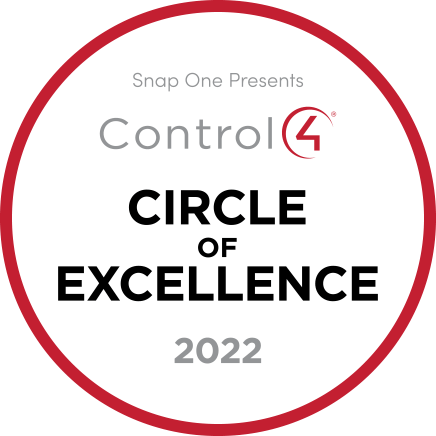People with Traumatic Brain Injury
Supporting you in your home
Traumic brain injury challenges
People with traumatic brain injury (TBIs) can suffer from a wide range of challenges, impacting cognitive, physical, and emotional well-being. Cognitive difficulties include problems with memory, attention, and decision-making. Physical challenges may involve headaches, dizziness, seizures, and impaired coordination. Emotional changes can manifest as mood swings, anxiety, depression, and irritability.
Following are just some of the common challenges associated with traumatic brain injury:
- Memory Impairment
- Attention Deficits & Trouble Focusing
- Problems with Planning & Organisation
- Dizziness and Balance Problems
- Fatigue
- Sensory Sensitivities
- Anxiety and Depression
- Social Isolation
- Difficulty with Activities of Daily Living
Positive outcomes for people with traumatic brain injury
Automated Spaces offers a variety of Independent Living Technology solutions that can provide a broad range of positive outcomes for those living with traumatic brain injury (TBIs):
- Increased Independence
- Improved Access to Environment
- Reduced Risk of Falls
- Reduced Risk of Long Lie
- Improved Dignity
- Maintenance of Personal Health & Hygiene
- Reduced Pain & Fatigue
- Improved Home Safety
- Reduced Power Consumption
- Improved Communication with Others
- Reduced Sense of Loneliness/Social Isolation
- Reduced Anxiety & Stress
- Increased Personal Safety
- Increased Confidence
Some of our Independent Living Technology solutions also can provide the following outcomes for those caring for people with traumatic brain injury (TBIs)s:
- Reduced Demand on their Time
- Increased Quality of Time with Family Member/Friend
- Reduced Stress/Anxiety
- Faster Response to Emergency
If you would like to know more about how we can provide these outcomes
Independent living technology solutions for traumatic brain injury
Automated Spaces can provide the following Independent Living Technology solutions for traumatic brain injuries (TBIs):
- Smart home hub
- Occupancy activated room lighting
- Fall detection sensors
- Circadian rhythm lighting
- Nudges
- Water damage prevention
- Door status monitoring
- Smart intruder alarm
- Door/window contact sensors
- Smart mains power sockets & adaptors
- Electronic shared calendar
See the following sections for further details about the independent living technologies for traumatic brain injury (TBIs).
You can also download our
traumatic brain injury brochure by completing the form at the bottom of this page.
Smart home hub
A Smart Home Control System acts as a central hub for a wide range of 3rd party devices and variety of differing manufacturer’s products. It translates the communications between these different devices, which use differing programming languages, so that they can all share information with the central smart home control hub.
The hub can then co-ordinate the appropriate resulting action, based on the incoming signals, on the relevant devices around the home e.g., when a water leak sensor detects the presence of water from an overflowing tap on the floor of a bathroom, while at the same time a radar sensor is also communicating to the smart home control system hub that there is no person present in that room, then the control system hub programming logic can allow it to send a signal to a Solenoid Shut Off Water Valve to shut off water supply to that tap.
Useful for those that want to control or interact with various systems in their home.
Occupancy activated room lighting
Light fixtures in rooms that can automatically turn on when someone enters or leaves the room depending upon the time of day and whether the room is dark.
The brightness level that the light fixture(s) turn on can be altered to suit the relevant time of day and light levels in the room i.e., a light could turn on at 100% brightness from sunset to the time the resident typically goes to bed. But then if they got up in the middle of the night, the light would only turn on at say a 10% dimmed brightness, reducing the chance of the resident being temporarily dazzled by the light.
This is useful for those that suffer with sensory sensitivities.
Fall detection sensors
Fall detection sensors with push notification/email alerts sent to family members or informal care providers. Fall sensors are ceiling mounted meaning the person in the home doesn’t need to use a wearable fall alarm device or be able to reach a phone to summon assistance.
Useful for those prone to falls.
Circadian rhythm lighting
LED light fixtures that can have their colour temperature automatically altered, gradually throughout the day, by a Smart Home Hub. This allows the LED lights to mimic the changing colour of the sun rays outside through the daylight cycle i.e., a warm brownish/white 2700K first thing in the morning at sunrise, increasing to a brilliant white 6000K in the middle of day, then gradually cycling back to the warm brownish/white 2700K by sunset.
Mimicking the natural outdoor sunlight colour temperature, on your internal light fixtures, can have a positive impact on your circadian rhythm. A healthy circadian rhythm has been associated with an improved body clock, better sleep patterns and alertness during the day. Studies have also shown this can reduce the risk of falls (in care homes).
Lights can be operated by smart light switch, mobile phone/tablet application, voice command or as part of a pre-programmed schedule or in response to external events (e.g., trigger of a presence sensor, etc.).
Useful for those that suffer with sleep related issues e.g., fatigue, tiredness, lack of concentration, etc.
Nudges
Alerts generated by the activity monitoring, in the right circumstances, can trigger a suitable action on the smart home hub to support an individual to help themselves in the first instance e.g., if someone hasn’t been in their kitchen by 10am in the morning, then they likely have not had breakfast.
Rather than sending an alert to a third party to step in and check on the person, we can trigger an audible ‘Nudge’ announcement played over a speaker in the home to encourage the person to consider having breakfast.
With the added reassurance that if the person doesn’t respond to the ‘Nudge’, then after an appropriate amount of time, this issue will then be escalated to a third party for them to take the required action.
Useful for those that would like to gain more independence from the additional support of a relevant audible suggestion.
Water damage prevention
A sensor that detects water usage and leaks, placed on the mains water pipes for the property, combined with sensors that detect if the bath water is overflowing and whether there is occupancy in the room.
With the ability to automatically switch off the mains water supply, issue an audible alert in the home and send a push notification alert.
Useful for those prone to forgetting things e.g., those that occasionally leave taps running.
Door status monitoring
Warning announcements played from speaker located close to any exit doors (depending on time of day), to prompt if person should be leaving, with optional push notification/email alerts sent to family members or informal care providers.
Useful for those who struggle with executive function issues e.g., decision making.
Smart intruder alarm
Smart intruder alarm, when the resident goes to bed, that automatically checks all windows and doors around the home are closed, if required closes any automated doors/windows, turns off all the lights, TVs and radios around the home, before arming the night-time mode of the intruder alarm.
Useful for those that have memory impairments e.g., people that forget to complete tasks such as arming their intruder alarm before they go to bed.
Door / window contact sensors
Door/Window contact sensors that can send push notification/email alerts to service user, resident, family members or informal care providers when the door/window has been left opened for too long.
A great solution to improve home security and reduce risks of burglary through open windows or doors.
Useful for those that have memory impairments e.g., people that forget to complete tasks such closing their windows after opening them.
Smart mains power sockets & adaptors
Smart mains power adaptors who's on/off status can be remotely checked; the adaptors can also be remotely switched on or off; or using a smart hub we can activate a timer that automatically switches off power after a certain amount of time.
Smart mains power wall sockets that can be remotely switched on or off.
Useful for those people who are prone to suffering from memory loss issues and anxiety that they have not turned off a device e.g., for those who worry they have left their hair straighteners or hair dryer switched on.


